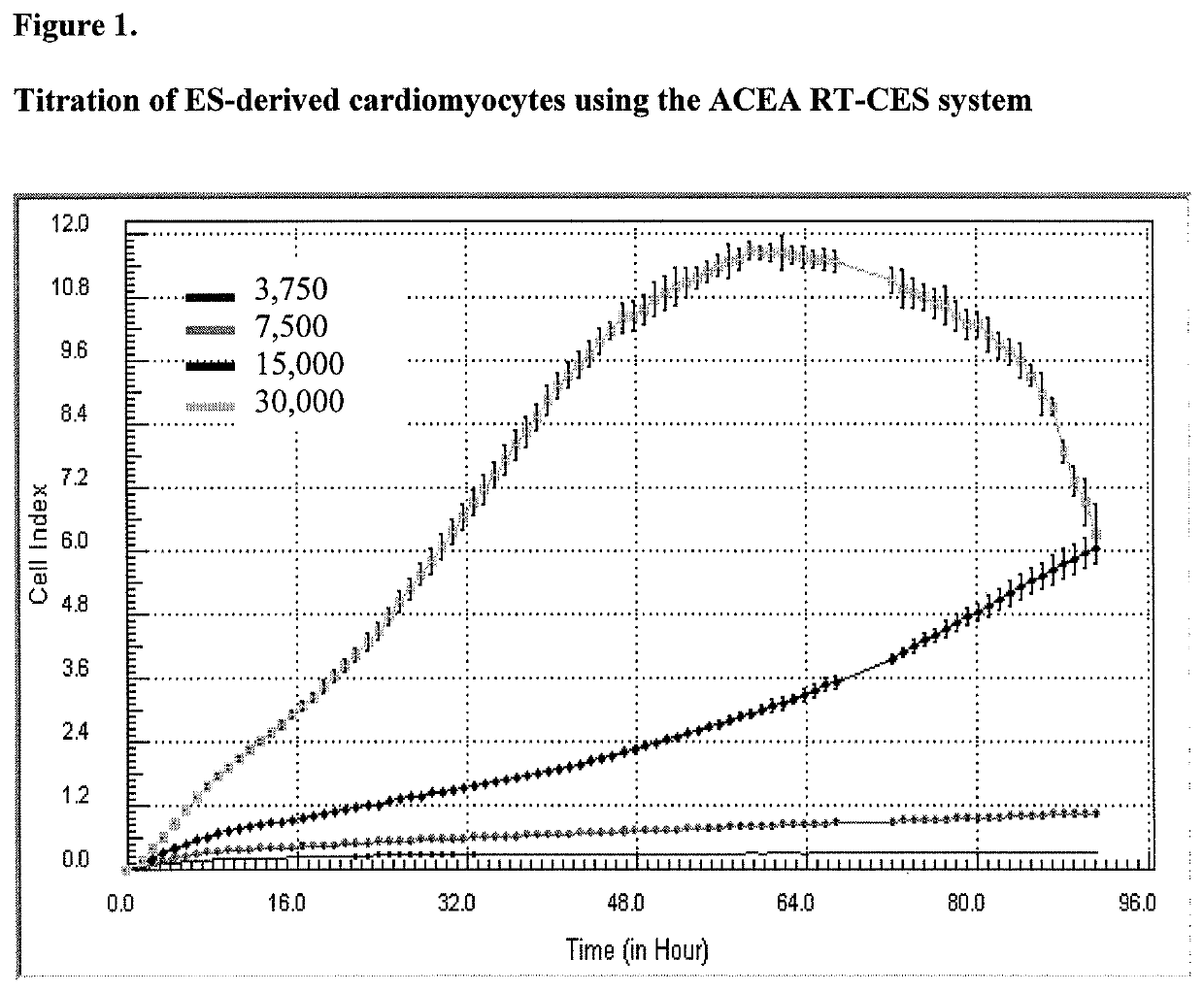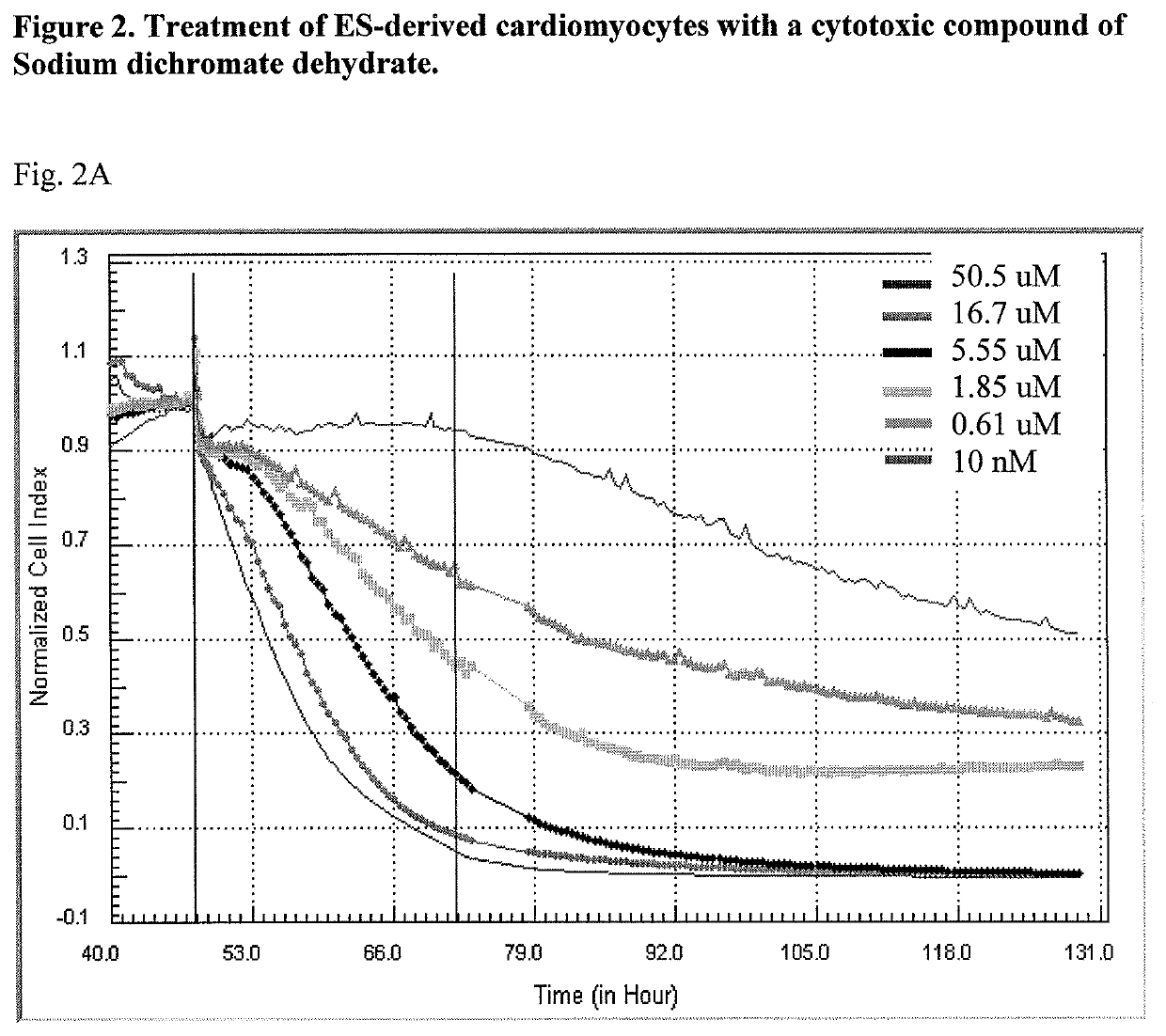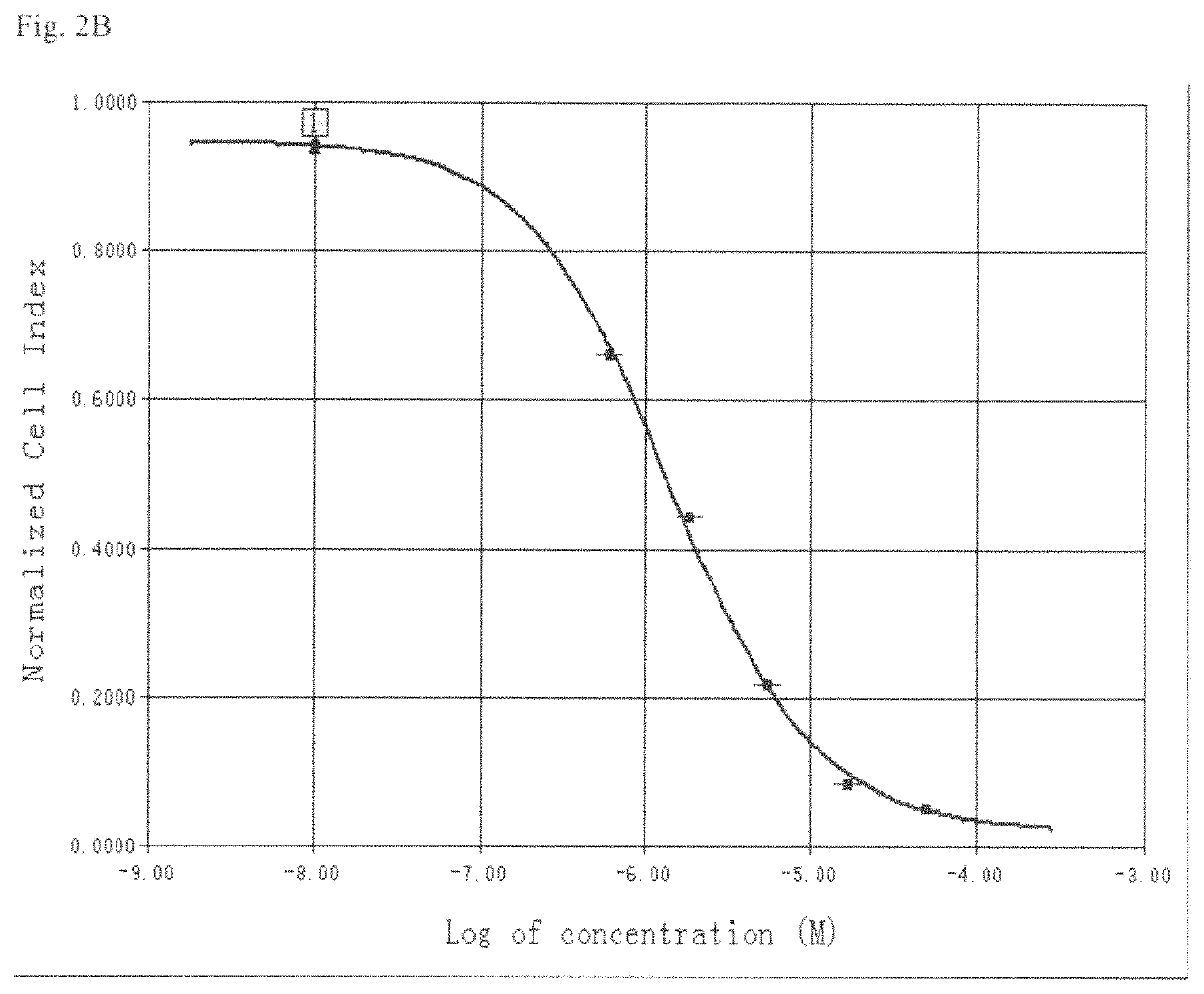System and method for monitoring cardiomyocyte beating, viability and morphology and for screening for pharmacological agents which may induce cardiotoxicity or modulate cardiomyocyte function
a cardiomyocyte and monitoring system technology, applied in the field of cell-based assays, can solve the problems of affecting drug discovery and development projects, increasing their cost, and lack of reliable monitoring monitoring methods, so as to improve the efficiency of potential throughput, improve cell characterization, and improve the effect of characterization
- Summary
- Abstract
- Description
- Claims
- Application Information
AI Technical Summary
Benefits of technology
Problems solved by technology
Method used
Image
Examples
example 1
Extra-Cellular Recording on a Disc-Shaped Microelectrode Array
Medium and Reagents
[0243]The standard cell culture medium was Cor.At® Culture Medium (AXIOGENESIS AG, Cologne, Germany) supplemented with 5% of fetal bovine serum (Hyclone, Logan, USA), 100 μg / ml of puromycin. Fibronectin from bovine plasma (1 mg / mL solution, Sigma, St. Louis, USA) was used as coating (4 hrs or overnight) material before plating the mouse embryonic stem cell. E4031, a class III antiarrhythmic drug which is a specific antagonist for hERG and EAG like channels was obtained from Sigma (St. Louis, USA).
Cardiomyocyte Preparation
[0244]Cardiomyocytes (Cor.At®, AXIOGENESIS AG, Cologne, Germany) are derived from transgenic mouse embryonic stem cells. Each vial contains 1 million viable Cor.At® cardiomyocytes (>99.9% pure). These highly purified cardiomyocyte maintain the phenotype of adult mouse cardiomyocyte and express cardiac-specific connexin-43, which is an indication of the ability for excitation-contraction...
example 2
Extra-Cellular Recording Using One Electrode Structure on the Substrate and One External Reference Electrode
[0250]FIG. 22 shows an extra-cellular field potential recording of mouse stem-cell derived cardiomyocytes obtained using a device of the present invention. The circle-on-line electrode array (with circle diameter 90 micron, line width 30 micron, the electrode gap distance 20 micron, see FIG. 13F for representation of circle-on-line electrodes) consisting of two electrode structures are fabricated on a glass substrate. During extra-cellular field potential recording, one circle-on-line electrode is used as a recording electrode and an external wire electrode is inserted into the well serving as a reference electrode. Cell preparation, reagents, cell culture and extracellular recording setup are the same as those described in to example 1.
[0251]FIG. 22A shows a field potential (after an amplification of 10,000) before treatment for a 3-day cardiomyocyte culture in a well contain...
example 3
Parallel Cell-Impedance Measurement and Extra-Cellular Recording for Cardiomyocytes Prior to and after Qunindine Treatment
[0253]FIG. 23A through 23E show another example of field potential change for cardiomyocytes at different time points before and after the treatment with 3 uM Quinidine, as recorded from a 3-day cardiomyocyte culture in a well containing circle-on-electrodes. Similar to the configuration for data in FIG. 22, an external wire electrode was inserted to the well serving as a reference electrode. Before treatment, cardiomyocytes were beating at a rate of ˜72 beats per minute. As shown in FIG. 23 B through D, corresponding to the field potential recorded at 10 seconds, 50 seconds, 3 minutes and 9 minutes after treatment with 3 uM Quindine, Quindine has a dramatic effect on the field potential of the cardiomyocytes.
[0254]In parallel, impedance of the cardiomyocytes in such a well is monitored. FIG. 24A shows the impedance spikes as monitored on the circle-on-line elect...
PUM
| Property | Measurement | Unit |
|---|---|---|
| diameter | aaaaa | aaaaa |
| time | aaaaa | aaaaa |
| time | aaaaa | aaaaa |
Abstract
Description
Claims
Application Information
 Login to View More
Login to View More - R&D
- Intellectual Property
- Life Sciences
- Materials
- Tech Scout
- Unparalleled Data Quality
- Higher Quality Content
- 60% Fewer Hallucinations
Browse by: Latest US Patents, China's latest patents, Technical Efficacy Thesaurus, Application Domain, Technology Topic, Popular Technical Reports.
© 2025 PatSnap. All rights reserved.Legal|Privacy policy|Modern Slavery Act Transparency Statement|Sitemap|About US| Contact US: help@patsnap.com



